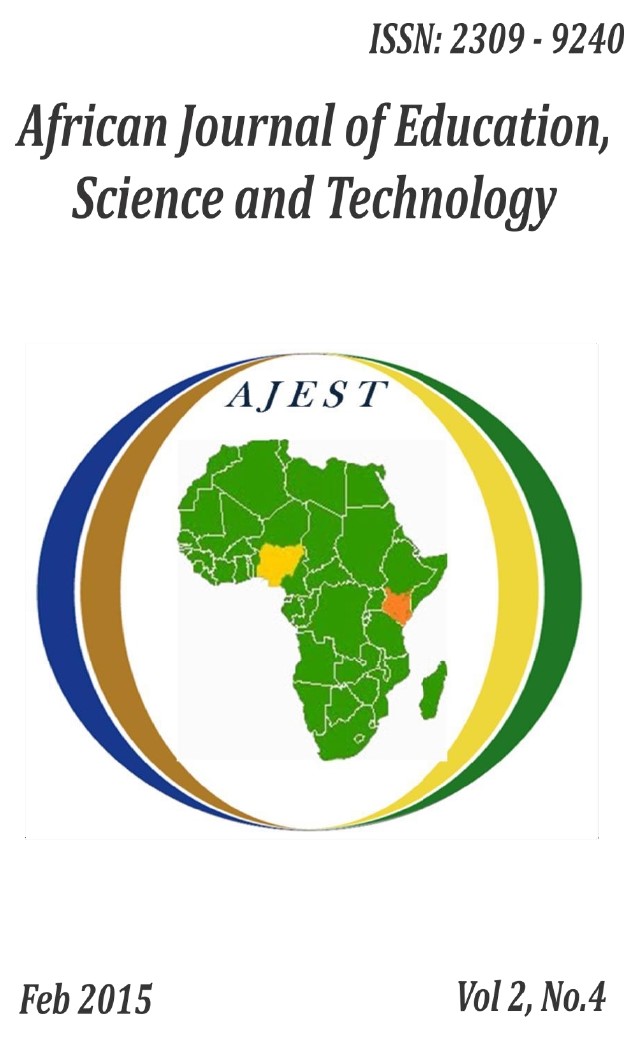Effect of the Provision of Teaching and Learning Materials through FPE on Academic Performance among the Public Primary Schools
##article.abstract##
The introduction of Free Primary Education (FPE) in January, 2003 in Kenya witnessed an increase of enrolment in public primary schools. This resulted to overcrowding in the existing classrooms as funds were not allocated on infrastructure to counter the demand raised. Due to the influx of learners in the classrooms, schools experienced shortage in the teaching and learning materials. However, inadequate teaching and learning materials in public primary schools are threatening to add another impediment to the Kenya‘s development efforts particularly in its effort to achieve the millennium development goals (MDGs) by 2015. According to the ICS general situation analysis conducted in Busia district in the second half of 2007, it revealed that the quality of basic education has been compromised by the effects of free primary education (FPE). Further, it has resulted to teacher-pupil ratio of 1:80 in most public primary schools and a high course textbook ratio of 1:8 in these schools. This has compromised the delivery of quality education within the district and as such a significant number of children leave public primary schools without gaining even basic reading and writing skills. Indeed there is widespread consensus that the provision of some teaching and learning materials like textbooks can substantially increase test scores. The purpose of this study was to determine the effect of the provision of teaching and learning materials through FPE on academic performance among the public primary schools in Busia district, Kenya. A descriptive survey research was adopted. the target population for the study included 1 District Education Officer (DEO), 1 Area Education Officer (AEO), 46 head teachers, 605 teachers and 32,066 pupils of standard 7 and 8.. The sample of the study included. The sample size was determined by a 30% of the target population. Data collected was analyzed using a blend of Descriptive statistics and inferential.
References
Adeyemi, M. (2011). Communication Role in Universal Basic Education: Partnership Policy on Facilities Provision in Nigerian Primary Schools. Anabisi Onabayo University Press, Nigeria
Alani, R. (2002). Planning for Universal Basic Education in Nigeria. Paper presented at the Conference organized by the National Institute for Educational Planning and Administration, Ondo May 30-31
Ambuko, S (2008). Selection and Use of Media in the Teaching of Kiswahili in public secondary Schools in Emuhaya District, Kenya. Unpublished Med. Thesis. Maseno University
Briggs, L (1977). Instructional Design: Principals and Application. New York: Englewood Cliffs
Ellington et al. (1993). Handbook of Educational Technology. Pentonville Road. London: Kogan Page Ltd, 120
Gay, R.(1992). Educational Research Competencies for Analysis and Application, (4th. Ed.). Newyork, Macmillan publishing company
Jimoh, F. (2009). Use of Instructional Material in the Teaching of Social Studies in Secondary Schools in Kabba/Bunu Area of Kogi State
Mugenda, O., & Mugenda, A. (1999). Research Methods; Quantitative and Qualitative Approaches. Nairobi Kenya: African Centre for Technology Studies
Mwendwa, K. (2011). The Impact of Free Primary Education on Academic Performance in Public Primary Schools in Mombasa County, Kenya. MA Thesis
Ochanda, J (2010). Challenges and Opportunities in the Use of Scientific Calculators in the Teaching and Learning of Mathematics in Secondary Schools in Emuhaya District, Kenya. Journal of Media and Communication Studies, 3(3), 102-111. Retrieved @http//www.academicjournals.org/jmcs.
Okeke, A. (1997).Administrating Education in Nigeria. Problems and Prospects. Ibadan Heineman Educational books
Oketch, & Morseti, (2009). The Consortium for Educational Access, Transition and Equity (CREATE)
Petty (2004). Teaching Today. A Practical Guide. Delta Place, Cheltenham, United Kingdom: Nelson Thornes Ltd.
Presidential Press Service of (2004, December 9). Press Statement on Free Primary Education Programe
Schutz, R & Gessaroli M. (1987). The Analysis of Repeated Measuring Designs InvolvingMultiple Independent Variables
UNESCO (2005). Challenges of Implementing Free Primary Education in Kenya – Assessment Report.
Nairobi: UNESCO


